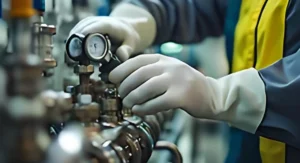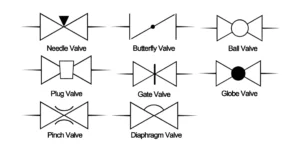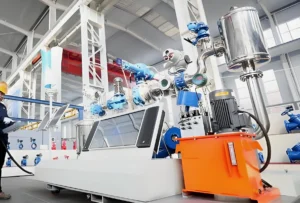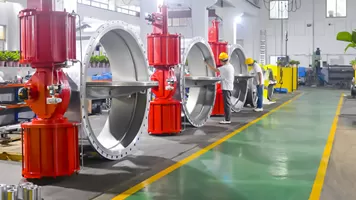Valve leakage is a critical factor in industrial processes, affecting system efficiency, safety, and environmental compliance. Valve leakage class refers to the standardized categorization of allowable leakage rates for valves under specific test conditions. These classifications are essential for selecting the right valve for applications ranging from oil and gas to water treatment. This article explores the key standards, testing procedures, and practical implications of valve leakage classes, providing a comprehensive guide for engineers, manufacturers, and operators.

Understanding Valve Leakage
Valve leakage occurs when fluid escapes through the valve seat or other components, even when the valve is in the closed position. There are two primary types of leakage:
-
Internal Leakage: Fluid passes through the valve seat or internal components, affecting process efficiency.
-
External Leakage: Fluid escapes to the atmosphere, posing safety and environmental risks1315.
Leakage can result from factors such as improper valve closure, damaged seats, or inadequate sealing mechanisms. To address these issues, international standards define leakage classes, which specify acceptable leakage rates for different valve types and applications.
Key Standards for Valve Leakage Classification
1. ISO 5208
ISO 5208 is a globally recognized standard for pressure testing metallic valves. It defines 10 leakage rates (Rate A to Rate G) for both liquid and gas tests. Rate A represents the tightest seal, requiring no visually detectable leakage, while Rate G allows higher leakage rates111.
-
Test Fluids: Water, air, or other suitable gases.
-
Leakage Rates: For example, Rate B allows 0.01×DN mm³/s for liquids and 3×DN mm³/s for gases1.
-
Applications: Widely used in industries requiring high-pressure and high-temperature valve performance.
2. API 598
API 598 is the primary standard for valve testing in the oil and gas industry. It specifies leakage rates for resilient-seated and metal-seated valves, with stricter requirements for soft-seated valves (e.g., zero leakage)19.
-
Test Procedures: Hydrostatic and pneumatic tests.
-
Acceptable Leakage: For example, metal-seated valves allow up to 24 drops/min for liquid tests and 48 bubbles/min for gas tests6.
3. ANSI/FCI 70-2
ANSI/FCI 70-2 defines six leakage classes (Class I to Class VI) for control valves. Class VI, known as the “soft seat classification,” is the tightest, allowing minimal leakage for resilient-seated valves413.
-
Class VI Leakage: For a 1-inch valve, the allowable leakage is 0.15 ml/min4.
-
Applications: Critical processes requiring high shut-off tightness.
4. EN 12266-1
EN 12266-1 aligns with ISO 5208 but lacks some leakage rates (e.g., AA, CC, EE). It is commonly used in European industries19.
Testing Procedures for Valve Leakage
1. Liquid Tests
Liquid tests involve filling the valve with water or another suitable liquid and measuring leakage over a specified duration. ISO 5208 and API 598 provide detailed guidelines for these tests111.
2. Gas Tests
Gas tests use air or nitrogen to detect leakage. These tests are more sensitive and are often required for critical applications1113.
3. Test Duration and Pressure
-
Duration: Varies based on valve size (e.g., 15 seconds for DN ≤ 50, 120 seconds for DN > 350)11.
-
Pressure: Typically 1.1 times the valve’s maximum operating pressure11.
Practical Implications of Valve Leakage Classes
1. Industry Applications
-
Oil and Gas: API 598 and ISO 5208 are widely used for pipeline and refinery valves913.
-
Water Treatment: ANSI/FCI 70-2 Class IV is suitable for non-critical applications4.
-
Power Generation: High-pressure valves often require Class V or VI for tight shut-off15.
2. Environmental and Safety Considerations
Leakage can lead to fugitive emissions, environmental pollution, and safety hazards. Compliance with leakage standards helps mitigate these risks1315.
3. Cost and Performance Trade-offs
Higher leakage classes (e.g., Class VI) involve stricter manufacturing and testing requirements, increasing costs. However, they offer better performance in critical applications415.
Conclusion
Valve leakage classes provide a standardized framework for evaluating and selecting valves based on their sealing performance. Understanding the key standards (ISO 5208, API 598, ANSI/FCI 70-2) and testing procedures is essential for ensuring system efficiency, safety, and environmental compliance. By adhering to these standards, industries can optimize valve performance and minimize operational risks.







